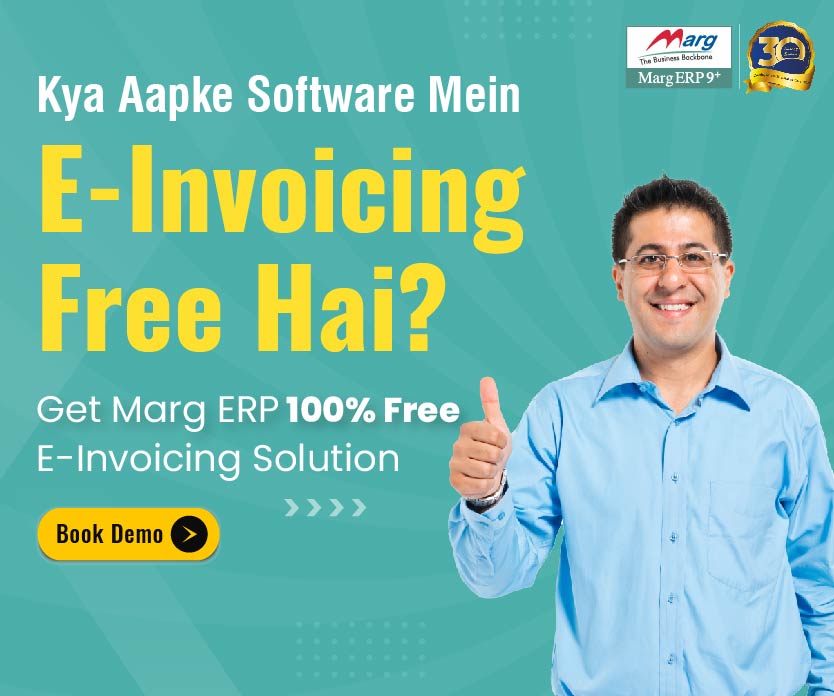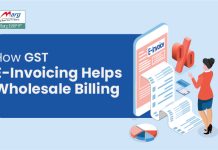Table of Contents
ToggleLatest Update
Starting April 1, 2022, the CBIC has issued a notification that will be extended to business with annual aggregate turnover Rs.20 crore & above
Update on 8th March 2021: As per the recent CGST Notification 05/2021, businesses having turnover above Rs. 50 Crore are required to generate E-Invoice from 1st April 2021.Introduction
E-Invoicing is an initiative for the development of the country as it will expand the compliance base and income as revenue. It is likewise a chance for advanced opportunities, one of the huge parts of the government’s ‘Digital India’ program. While it will most likely add a burden on businessmen if done manually, but it can be easily done using accounting software that is integrated with the GST portal.
Know the Impact of E-Invoicing Update on MSMEs
The new norms issued by the government to verify e-invoices for business-to-business (B2B) transactions of businesses with an annual turnover of or above Rs 50 crore bring with it numerous benefits, for both the government & the taxpayers. It will help is creating the ease of doing business. E-invoicing includes a high-level integration between all government GST portals such as GSTN portal, e-waybill & IRP, and taxpayer accounting/ERP software.
Though e-invoicing has bought many challenges with its implementation for business & processes that are currently being followed by taxpayers, subsequently, in the long run, businesses will be benefited from this implementation. It will save the efforts and time that is utilized into GST reconciliation & compliance management. As an automated system e-invoicing will ensure an error-free process & hassle-free tax compliance.
Here are Some Key Points to Consider for Businesses
- Categorizing the transactions with e-invoicing like imports, asset transfers, cross changes, etc.
- Suppliers can be grouped into small and large categories to identify data collation requirements
- Updating information about the customer & the supplier to reconcile with the additional information required for e-invoices (like bank details, GSTN details, PIN codes, etc.)]
- The accounting system can be customized to make it compatible as per the changes from the government
- Simplifying the GST returns process so that B2B supplies get auto-populated & B2C supplies can be manually uploaded
E-Invoicing in India
With India embracing e-invoicing, it has received something like what is known as the ‘clearance model’ at the worldwide level. In the clearance model, it is obligatory for organizations to get the invoices reported and cleared by the government on a designated portal prior to imparting them to the purchaser. The focus is to move away from the post-facto review-based process of checking and towards more real-time reporting & analysis.
Further, the move will probably push the divided MSME area to embrace new innovation & technology, which eventually, will drive the economy quicker. This may likewise make organizations versatile and adoptable to innovation & the latest ways of doing business. These advantages are the sign of the new system and furthermore, of true value to the economy.
The improvement in the system signifies different advantages for the economy as well as the government. It will prompt a decrease in instances of questionable Input Tax Credit (ITC) which will help in reducing revenue leakage. The new process also ensures real-time monitoring with the mandatory affixation of QR code on invoices which has invoice reference number (IRN) & all important parameters. This empowers the buyer to check the validity of e-invoices through an application provided by the government of India.
In addition, the integration of e-invoicing with GST returns eliminates the chances of human mistakes by decreasing the need of reporting similar details again & again. Before e-invoicing was introduced, there were numerous manual reconciliations between GSTR 3B, GSTR 1, and the e-way bill but now, with the execution of e-invoice, the details uploaded on the Invoice Registration Portal get auto-populated in the e-way bill and GSTR 1. Thus, the liability of the provider in GSTR 3B & ITC from GSTR 2B, will be automatically calculated.
How MSME Can Simplify E-Invoicing Challenges?
Looking at the current trend the solution to face e-invoicing challenges is to get equipped with a latest and advanced technology. MSME need to digitize their businesses & implement accounting software ready with e-invoicing. As this will be mandatory, the MSME business owners have no time left for doing researches now. Here I would like to suggest Marg ERP 9+ as the best suitable e-invoicing software for MSMEs. Marg e-invoicing software is updated with latest features for e-invoicing & audit trail.
Summing Up
The introduction of e-invoice & the latest update in e-invoicing by the Ministry of Finance is certainly a mutually beneficial opportunity for businesses particularly MSMEs. With e-invoicing getting mandatory for businesses with an annual turnover of or above Rs. 50 crore will significantly reduce the tax compliance burden. MSMEs will get equipped with innovative technology; they will experience proficient working and move towards business growth.






